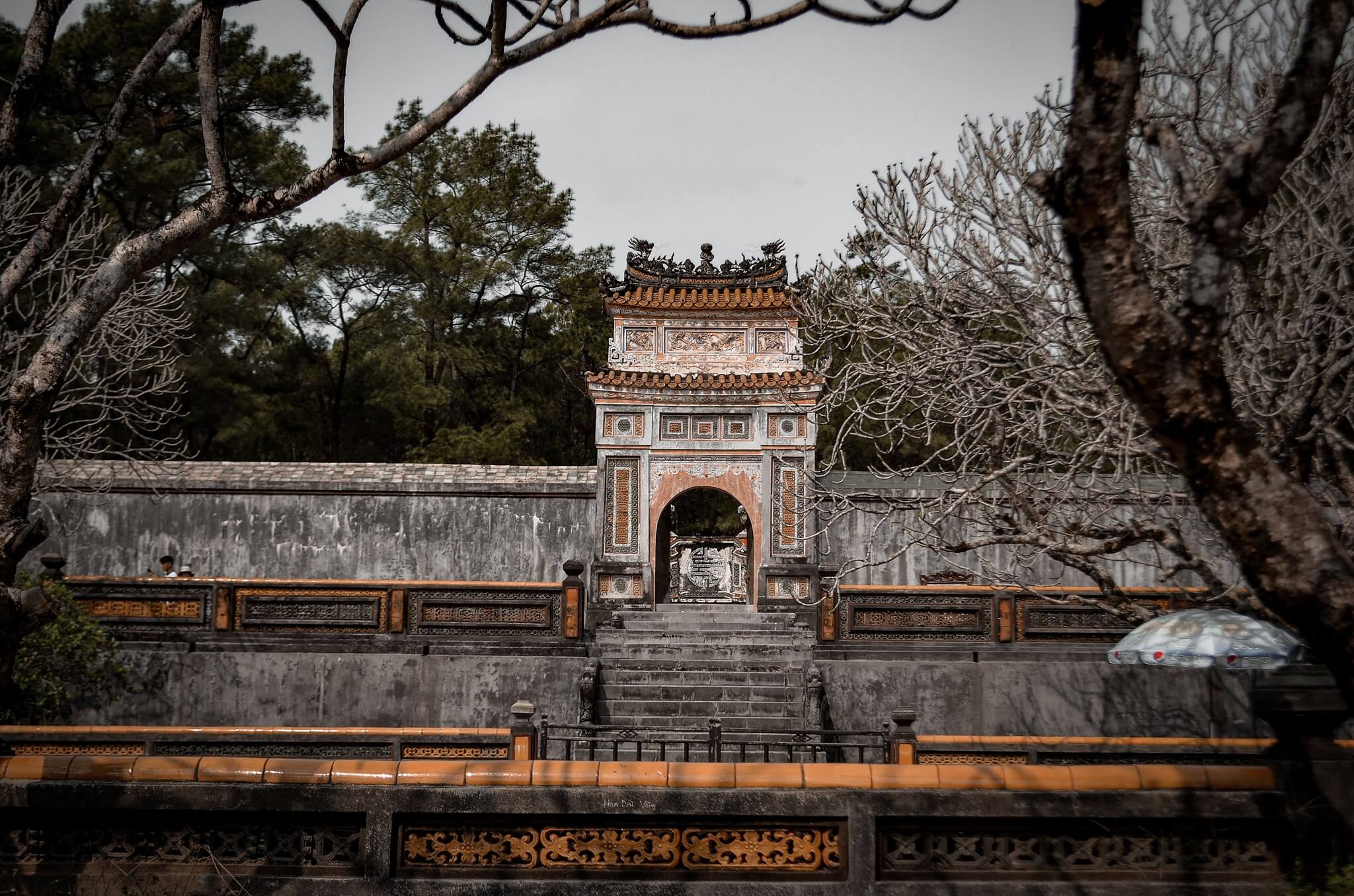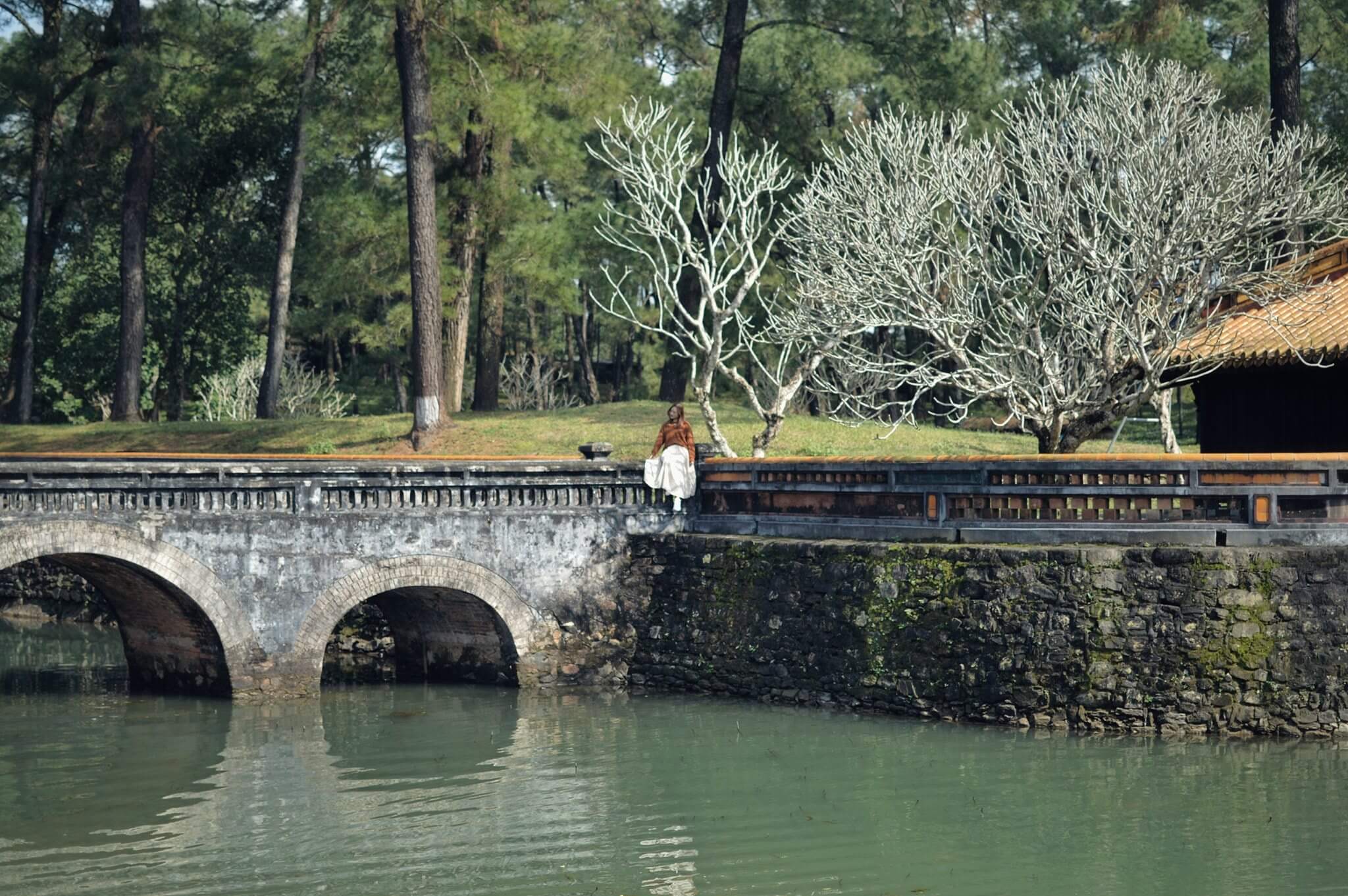Tomb of Tu Duc in Hue
Considered as one of the most beautiful works of the royal architecture of the Nguyen Dynasty, Tu Duc Tomb is the resting place of King Tu Duc with a gentle appearance, located in a charming landscape.
The following article provides some information about Tu Duc Tomb in Hue , hoping to bring you useful things in your journey to discover the dreamy Hue.

Where is Tu Duc Tomb?
Built in a narrow valley, Tomb of Tu Duc (Khem Lang) belongs to Duong Xuan Thuong village, now Thuong Ba village, Thuy Xuan commune, Hue city, located on the right side of romantic Canh Vong hill. Google Maps
Khiem Lang is also the most attractive destination among the mausoleums of kings in Hue.
Guide to move to Tu Duc Tomb
Tu Duc Tomb is only about 6km from the center of Hue city, so it is easy to move to by motorbike or car.
From Bui Thi Xuan – turn to Huyen Tran Cong Chua Street, you ask people and you will be pointed directly to Tu Duc Tomb (Khem Lang).

Explanation of Tu Duc Tomb
History of the construction of Tu Duc Tomb
Tu Duc Tomb is a historical relic in the complex of Hue monuments, which was recognized by UNESCO as a world cultural heritage on December 11, 1993.
This is the burial place of the 4th emperor of the Nguyen Dynasty, King Tu Duc (Nguyen Phuc Hong Nham), who reigned for 36 years from 1847-1883, is the longest reigning king of the Nguyen Dynasty.
- 1864: The mausoleum was built with 50,000 soldiers participating.
- In 1866: after the Chay Voi Rebellion, King Tu Duc changed his name to Khiem Cung.
- 1873: Khiem Cung was completed. After the king’s death, the mausoleum was renamed Khiem Lang

Unique architecture of Tu Duc Tomb
Tu Duc Tomb has sophisticated architecture, charming landscape, and is one of the most beautiful mausoleums of the Nguyen kings.
The mausoleum consists of two main parts: the shrine area and the mausoleum. These two parts are arranged parallel to each other, the criminal record is Giang Khiem mountain, the posterior occipital is Duong Xuan mountain. The main road is Luu Khiem lake.
In particular, this architectural complex is located on a total area of 12 hectares, including nearly 50 works in Tu Duc mausoleum in both the area impregnated with electricity and the tomb has the word Khiem in the name such as: Cua Vu Khiem, Khiem Cung Mon, Chi Khiem Duong, Luu Khiem Lake, Chong Khiem Ta, Du Khiem Ta, Hoa Khiem Palace…

Panorama of Tu Duc Tomb in Hue
Khiem Cung Mon
The two-storey building in the form of a gazebo is located on a high platform, in line with Du Khiem Ta. This is the place for the king to rest every time he visits. In the middle is Hoa Khiem Palace, which was the king’s business when he was alive, and now is used to worship King Tu Duc and his queen.
Luong Khiem Palace
Behind Hoa Khiem Palace is Luong Khiem Palace, which used to be the king’s place to rest and enjoy tea. Later, it was used as a place to worship the spirit of King Tu Duc’s mother – Mrs. Tu Du. On the right is On Khiem Luong – the place to store royal belongings.

Minh Khiem Duong – the only ancient theater in the system of mausoleums
Minh Khiem Duong is the oldest theater among the 4 theaters built during the Nguyen Kings. This is the place used for the king to watch and sing, very high value in architectural art and decorative motifs.
Tinh Khiem Island
As a land to grow flowers and raise animals, as a pastime of the king when he is tired of the court work. The king often came to enjoy flowers, write poetry, read books. In particular, in Tinh Khiem island area, there is also a long canal with 3 bridges crossing leading to a green and fresh pine hill.
Weight house built on water
Chong Khiem Ta (where the king rested, enjoyed the cool air, wrote poetry, enjoyed art) and Du Khiem Ta (the marina for the king when traveling to enjoy the scenery at Luu Khiem Lake) are two unique architectural works. of the overall architecture of King Tu Duc’s Tomb in particular, the Complex of Hue Monuments in general.

Khiem Cung Ky Beer
Khiem Cung Ky stele – the stele with the largest number of characters in Vietnam with 4,935 Chinese characters engraved on both sides of the stele, is also the stele with the largest size and weight among the steles of the same type in the mausoleum. Emperor Nguyen Dynasty. This is also the only stele an emperor wrote for himself.
In 2015, Khiem Cung Ky Beer was recognized as a National Treasure of Vietnam.
Tomb of King Tu Duc Hue
Behind Duc Hue’s mausoleum is the mausoleum. The first is Bai Dinh with two heads of a mandarin and martial arts statue. Next is Bi Dinh with a 20-ton stone stele engraved with Khiem Cung Ky. Located on Tieu Khiem Tri is Buu Thanh made of bricks, in the middle is Tu Duc’s tomb. One more special area is Boi Lang, the resting place of King Kien Phuc – the 7th king of the Nguyen Dynasty.
Ticket price to visit Tu Duc Tomb of Hue
- For Vietnamese tourists: 100,000 VND/adult, 20,000 VND/child.
- For foreign tourists: 150,000 VND/person.

Opening time of Tu Duc Tomb in Hue
Tu Duc Tomb is open every day of the week, only changing the time according to the season:
- Summer: From 6:30am to 5:30pm
- Winter: from 7 a.m. to 5 p.m.
Destinations near Tu Duc Tomb in Hue
- Vong Canh Hill
Address: 102 Huyen Tran Cong Chua, Thuy Bieu, Hue City, Thua Thien Hue
- Dong Khanh Mausoleum
Address: Doan Nhu Hai, Thuy Xuan, Hue City, Thua Thien Hue
- Thuy Xuan incense village
Address: 84 Huyen Tran Cong Chua, Thuy Xuan, Hue City, Thua Thien Hue
- Huong Lam Pagoda
Address: Huyen Tran Cong Chua, Thuy Xuan, Hue City, Thua Thien Hue
Hue tourist map – mausoleums

“Poetic Hue, dreamy and romantic Hue, Hue – city of two World Heritages…” are the ever names people call Hue city – the latest imperial capital of Vietnam under Nguyen dynasty (from the 17th to 19th century). You are staying in Hue city and you would love to discover Hue City Tour but you don’t know how the best way is.
More: Hue City Tour
Experience of traveling to Tu Duc Tomb of Hue
- Prepare yourself with comfortable clothes, easy walking shoes and drinking water
- Do not step on or touch objects around without permission.
- Walk softly, speak quietly and do not make noise in the mausoleum.
- Absolutely do not litter indiscriminately affecting the landscape of the monument.



Comments